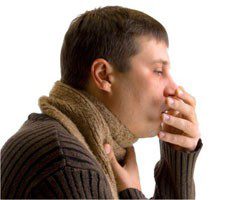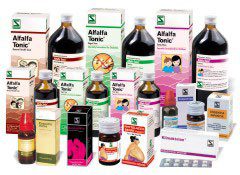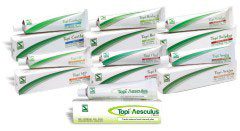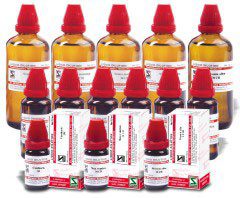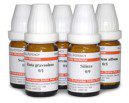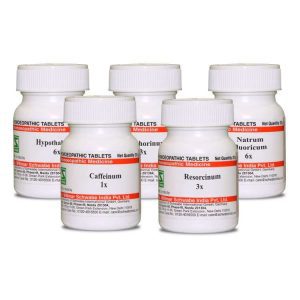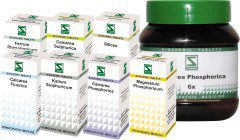Doctors Zone
Journal (JEBH)
Alpha™- Liv Drops
Alpha – Liv Drops Due to high demand from the market, for a formulation in drops for the liver, apart from the syrup already available in the market, Schwabe India developed this product. Introduction The liver plays a key role in metabolism. It has anabolic and catabolic, exocrine and endocrine functions. The liver is a blood reservoir, filter and store of different substances (e.g. glycogen, vitamins). It is the site of serum protein (e.g. albumin, prothrombin, fibrinogen) and enzyme synthesis. Metabolic processes (e.g. bilirubin, hormone, carbohydrate and lipid turnover) and the removal of toxic products are important liver functions. 1 Hepatotoxins (e.g. alcohol, tetracycline, acetaminophen, fungal toxins, and anabolic steroids) can cause specific damage to liver cells. Toxic hepatitis may be clinically silent or severe enough to lead to the rapid development of hepatic failure. Clinical features include hepatomegaly, enzyme abnormalities, fever, abdominal pain, anorexia, nausea, vomiting and weight loss. In patients with underlying cirrhosis, manifestations of portal hypertension may predominate. Aversion to fatty food, abdominal discomfort, nausea and vomiting after meals may be symptoms of 2 cholelithiasis. Jaundice results from accumulation of bilirubin. It has non-hepatic as well as hepatic causes. Hyperbilirubinaemia may be due to abnormalities in the 3 formation, transport, metabolism or excretion of bilirubin. TM Alpha -Liv Drops aids recovery and normalisation of liver functions. Severe liver disease needs specialised treatment. Indications: Slow liver functions, fatty liver, and for supportive treatment of hepatocellular jaundice and toxic liver damage.

Schwabe News Jan to June 2017 Mother Tincture info – Filipendula ulmaria
Filipendula ulmaria
It is commonly known as meadowsweet. Its stems are 1–2 m tall, erect and furrowed, reddish to sometimes purple. The leaves are dark-green on the upper side and whitish and downy underneath, much divided, interruptedly pinnate, having a few large serrate leaflets and small intermediate ones. Terminal leaflets are large, 4–8 cm long, and three- to five-lobed. A peculiarity of this flower is that the scent of the leaves is quite different from that of the flowers.
It is native to Europe, which grows easily in wet places. Generally it grows in ditches and the banks of streams and rivers. It is widely found in Europe, including Britain, from Iceland south and east to Spain, temperate Asia and Mongolia.
It contains ascorbic acid, chalcones, condensed tannins, coumarin, flavonoids spiraeoside, rutin, hyperoside, and avicularin, heparin plant, hydrolyzable tannins, mucilage, phenolic acids, phenolic glycosides (including spiraein, monotropin, and gaultherin), phenylcarboxylic acids, salicin, salicylates, spiraeoside, tannins, and vanillin. Its volatile oil contains salicylaldehyde, ethylsalicylate, methylsalicylate, and methoxybenzaldehyde.
It is covered by Homoeopathic Pharmacopoeia of India as well as German Homoeopathic Pharmacopeia. Shoots with flower are used for preparation of mother tincture.
The leaves and flowering stems are alterative, anti-inflammatory, antiseptic, aromatic, astringent, diaphoretic, diuretic, stomachic and tonic. It is a valuable medicine in diarrhoea, imparting to the bowels some degree of nourishment, as well as of astringency. According to some reports this drug is effective in stomach disturbance, heartburn, acidity, pain in abdomen etc. It is also believed to be very effective against the pathogens that cause diphtheria, both amebic and bacillary dysenteries, and pneumonia.
Recommended Dose: Q. Maximum recommended dose 3ml in three divided doses/day. Over dose causes gastric distress.
Caution: Should be avoided during pregnancy and lactation.
References:
- Andrew Chevallier, The Encyclopedia of Medicinal Plants, 1st Edition, 1996, Dorling Kindersley, London.
- P. N. Varma, Indu Vaid, Encyclopaedia of Homoeopathic Pharmacopoeia, Updated edition 2007, B. Jain Publishers, New Delhi
- Stenberg, J. A., Witzell, J., and Ericson, L. Tall herb herbivory resistance reflects historic exposure to leaf beetles in a boreal archipelago age-gradient. Oecologia 2-25-2006;16502319
- Sroka, Z., Cisowski, W., Seredynska, M., and Luczkiewicz, M. Phenolic extracts from meadowsweet and hawthorn flowers have antioxidative properties. Z Naturforsch [C] 2001;56(9-10):739-744. 11724378
- Thieme, H. [Isolation of a new phenolic glycoside from the blossoms of Filipendula ulmaria (L.) Maxim]. Pharmazie 1966;21(2):123. 5982978
- Poukens-Renwart, P., Tits, M., Wauters, J. N., and Angenot, L. Densitometric evaluation of spiraeoside after derivatization in flowers of Filipendula ulmaria (L.) Maxim. J Pharm Biomed Anal 1992;10(10-12):1085-1088. 1298367
- Mrs. Margaret Grieve, A Modern Herb, ISBN: 0486227987 & 0486227995. Source: https://www.botanical.com/botanical/mgmh/c/corkw100.html
Recent Advancements in Basic Homeopathic Research – A Reporton Two Significant Publications
Author: Snigdha Suman Dalua , Praveen Kumar Singh In a study conducted at the Experimental Farm of the State University of Santa Catarina, Brazil, researchers investigated the impact of homeopathic treatments on piglets during the nursery phase. The study aimed to determine whether homeopathic agents could reduce fighting behavior, improve growth performance, and affect hematological, metabolic, and oxidative variables.
Journal of Evidence Based Homeopathy Volume: 1, Issue: 1, January - June 2023
Comprehensive articles

Agrohomeopathy – A Review
Short cases

Unmasking the Intricacies: A Pyogenic Abscess Case Report

Lichen Simplex: A Singular Case Study

Ranula Unveiled: A Case Report and Management Approach

Lichen Simplex: A Singular Case Study

A Puzzling Presentation: A Case Report of Jaundice
Recent provings and updated materia medica

Acidum Formicum

Mygale

Thea Chinensis
Materia medica on phytohomeopathy

Chrysarobinum

Sanguinarinum nitricum

Thiosinaminum
Mother tincture

Asparagus Officinalis

Ginkgo Biloba

Rosmarinus Officinalis
Product watch

Alpha™- Liv Drops

Good Morning™ Constipation Drops

Zauber™ Hair Drops
Research News









